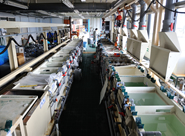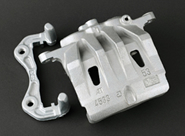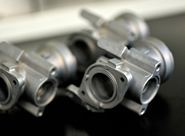Surface treatment explained

Surface treatment refers to treating the surface of a product in order to enhance its durability or strength.
Generally speaking, metal surface treatment, which is our area of expertise, is referred to as “plating.” This is performed by immersing metals and other substrates that are prone to oxidation in a bath and creating a thin film on the surface.
Depending on the properties of the material or the intended purpose of the product, a variety of coatings that make use of zinc, alloys, or chromate are employed. We actively explore ways of developing surface agents that are environmentally friendly and harmless to the human body.
Plating explained
Plating is performed by submerging conductive materials such as metals into a bath of zinc or chromium solution and attaching electrodes for an electrolytic treatment.
This is generally done in order to make materials rust- and corrosion-resistant, for decorative purposes, or to give them added functionality.
When plating for decorative purposes, the substrate is fully coated in order to change its perceived texture and appearance.
In contrast, when anti-rusting a substrate, the goal is to maintain the texture and feel of the material as much as possible while compensating for its lack of rust resistance. This entails selecting the right plating agent and proportion of ingredients in the solution.
-
Zinc plating
Iron is inexpensive and can be manufactured easily, so it is widely used in various products.
However, it is quite rust-prone, so it must be first treated with an anti-rust finish.
Galvanization is used to achieve that end.
When zinc is plated on the surface of iron, the zinc is the first layer to degrade, rather than the iron. A coating of even a few microns’ thickness has good longevity and is inexpensive, which is why this technique is widely used in the industrial sector.
There are also many cases where chromate or other conversion coatings are applied in order to prevent the corrosion of the zinc itself.
-
Alloy plating
Alloy plating refers to depositing two or more metals simultaneously on the surface of a material.
Compared to plating with a single metal, this technique confers a range of benefits.
Typical plated products would include zinc nickel alloys, which impart excellent corrosion resistance and sealing, as well as iron alloys that combine iron, nickel, cobalt, and other metals. New combinations are actively being researched and developed today.
These treatments impart anti-rust qualities several orders of magnitude greater than pure zinc plating.
Chromates explained

Chromates are a conversion treatment used to produce a coating which protects galvanized or zinc alloy finishes.
A chromate treatment creates a coating that boasts excellent anti-rust properties.
Furthermore, these finishes are self-repairing, so they will naturally repair slight scratches on their own.
However, hexavalent chromium was the traditional choice for chromates, but its high toxicity has driven a move towards alternative materials.